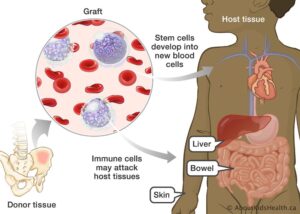What is black fungus?
Mucormycosis, often known as black fungus, is a very rare but hazardous fungus that infects people with weak immune systems. It causes black fungus disease. The black fungus is normally found in nature (soil, plants and rotting vegetables). This disease spread rapidly and usually fatal for the people with weak immune system.
Depending on where the infection originates in the body, the symptoms will differ. It may cause fever, headache, runny nose, face swelling, impaired vision, swollen and bulging eyes, and tissue death in the nose, sinuses, eye, and brain. Fatal infections can also affect the skin, intestines, stomach and lungs.
Relationship with COVID-19
Recently a few cases of COVID-19 infection had black fungus infection. This spread terror among the people in the Indian subcontinent. But most of these COVID-19 patients had significant comorbidities (for example – diabetes). Sometimes steroid is used to treat severe COVID-19 infection. One of the side-effects of steroids is causing a weak immune system. This gives opportunity to the opportunistic black fungus disease.
Classification
Black fungus is divided into five categories based on the part of the body that is afflicted. Mucormycosis of the kidney, also known as miscellaneous mucormycosis, is the sixth type of mucormycosis that affects various parts of the body but is less prevalent.
- Cutaneous: Persons with leukemia, HIV, graft-versus-host disease, poorly managed diabetes.
- Gastrointestinal: Low immunity people and low birth weight newborns.
- Pulmonary: In cancer patients and those who have received a stem cell or organ transplant.
- Rhinocerebral: In poorly controlled diabetes and in kidney transplant people.
- Disseminated: Other organs also involved via blood.
Sign and Symptoms
Black fungus disease signs and symptoms vary depending on where the infection is located in the body. The condition usually starts in the mouth or nose and spreads to the eyes when it reaches the central nervous system.
- Coughing up blood
- Difficulty in breathing
- Face may look swollen on one side
- Sinusitis
- Runny nose/ blocked nose
- Loss of taste
- Fever
- Numbness
- Pain in the face
- Headache
Causes
Black fungus disease is a fungal disease caused by a group of fungus. The most prevalent cause is the Rhizopus and Mucor genera invasion, which are common bread molds. Rhizopus oryzae causes fatal infections. Black fungus disease is less likely to be caused by Apophysomyces and Lichtheimia is only very seldom the culprit. Among the others are Saksenaea, Mortierella, and Cunninghamella.
Fungal spores are ubiquitous in the environment, such as on fruit, and are commonly taken by breath, albeit only a tiny percentage of the population is affected.
The fungus produces branch-like filaments that block blood arteries and destroy the tissues in their vicinity.
Risk factors
Following are the risk factors of black fungus disease:
- Severe malnutrition
- Liver disease
- Kidney failure
- Cancers such as lymphomas
- Iron overload
- Organ transplant
- Poorly controlled diabetes mellitus
- Low neutrophil count or metabolic acidosis
Prevention
Preventive precautions include:
- Avoiding direct contact with water-damaged structures
- Wearing a face mask in dusty environments
- Washing hands
- Covering hands, feet, and skin when soil or manure exposure is present, such as gardening and other particular outdoor activities.
- Antifungal medications may be given to people who are at higher risk such as COVID-19 patients and organ transplant patients.
Treatment
Antifungal medicines, surgical removal of infected tissue, and treatment involve the repair of underlying medical problems such as diabetic ketoacidosis.
- Medication: When black fungus disease is suspected, a 1mg dose of Amphotericin B is administered slowly over 10-15 minutes into a vein, followed by a once-daily dose based on body weight for the next 14 days. It may be necessary to continue it for a longer period of time. Alternatives include posaconazole and isavuconazole.
- Surgery: Surgery can be highly invasive, and contaminated brain matter may need to be removed in some nasal cavity and brain disease cases. It is possible to remove the eye structures, nasal cavity, and palate. It’s not uncommon for multiple operations to be necessary.
Prognosis
The black fungus spreads quickly, almost all those with broad infections, two-thirds of those with lung infections. Skin involvement is the most prevalent cause of mortality, accounting for roughly 15% of all deaths. The black fungus can result in a blood vessel clotting in the brain or lungs, which may cause the loss of neurological function and respiratory failure.



